










SATURDAY, JULY 6 | 7:30PM | WHITE RECITAL HALL
SUNDAY, JULY 7 | 3:00PM | ST. MARY’S EPISCOPAL CHURCH
OboeQuartetinFMajor,K.370/368b
WolfgangAmadeusMozart
I. Allegro (1756-1791)
II. Adagio
III. Rondeau:Allegro
CelesteJohnson,oboe;Anne-MarieBrown,violin; JessicaNance,viola;AlexanderEast,cello
Quatuorpourlafindutemps OlivierMessiaen (QuartetfortheEndofTime) (1908-1992)
I. Liturgiedecristal (Crystalliturgy)
II. Vocalise,pourl'Angequiannoncelafindutemps (Vocalise,fortheAngelwhoannouncestheendofHme)
III. Abîmedesoiseaux (Abyssofbirds)
IV. Intermède (Interlude)
V. Louangeàl'ÉternitédeJésus (PraisetotheeternityofJesus)
VI. Dansedelafureur,pourlessepttrompeNes (Danceoffury,fortheseventrumpets)
VII. Fouillisd'arcs-en-ciel,pourl'Angequiannoncelafindutemps (Tangleofrainbows,fortheAngelwhoannouncestheendofHme)
VIII. Louangeàl'ImmortalitédeJésus (PraisetotheimmortalityofJesus)
JaneCarl,clarinet;Anne-MarieBrown,violin; AlexanderEast,cello;MelissaRose,piano
Wolfgang Amadeus Mozart: Oboe Quartet in F Major K. 370/368b
I have a senior in high school in my house, one who is about to leave the nest, spread his wings, or whatever cliché you prefer about moving out. He’ll begin college this fall, and I’ve been reflecHng on this momentous transiHon. We’ve all experienced this moment, whether for ourselves, our children, or treasured friends. It is a moment full of contradictory emoHons: excitement about new adventures, nostalgia for a passing Hme of life, and uncertainty around what is to come. Can you recall your own Hme of striking out on your own and how it made you feel? We oRen forget that the composers we revere went through similar life changes, and those emoHons you’re remembering are likely the same as Mozart had in 1780.
The twenty-four-year-old Mozart was working as a musician for the Archbishop of Salzburg that year and was frustrated that none of his aNempts to find a different posiHon had come to fruiHon. He despised working for the Archbishop and longed to spread his own wings. Then came his lucky break. He received a commission for an opera from Charles Theodore, the Elector of Bavaria, who invited him to Munich to oversee the producHon. The resulHng opera, Idomeneo, was a tremendous success, and Mozart’s planned six-week sojourn turned into four months. He also renewed his acquaintance with Friedrich Ramm, the principal oboist of the Mannheim Court Orchestra and one of the greatest virtuosi on the instrument, and eagerly composed several pieces for him.
Perhaps the most important piece Mozart wrote for Ramm was his Oboe Quartet in F Major. Although it is easiest to think about the work as a string quartet with the oboe subsHtuHng for the first violin, in many ways it is a miniature oboe concerto with fast, flamboyant wriHng that pushed the oboe’s upper register in its day. From the oboe part it is clear that Ramm was a great virtuoso, but it is also clear that Mozart was pushing towards more equality of parts as he entered his mature period of composiHon. As you listen, noHce how the oboe melodies intertwine with the countermelodies in the violin or how those same melodies shiR among the instruments. As with many Classical concerH, the work is in three movements and begins with the longest movement, a lilHng allegro. Pay aNenHon for the brief imitaHve fugue that announces the return of the main theme toward the movement’s end. The second movement is an elegiac aria for the oboe that would have been at home in Idomeneo. Following this short movement, Mozart returns to the character of the opening movement with a nimble rondo that finds the oboe and strings gently rocking in a 6/8 meter. But Mozart has one more trick up his sleeve. In the middle of this movement, the oboe drops out of the waltz-like feeling into regular 4/4 Hme. The other instruments conHnue in their triple feel as though nothing is wrong unHl the oboe rejoins them and finishes the movement in a lively flourish.
Much like 1780 for Mozart, 1940 was a pivotal year for Olivier Messiaen. The thirtyone-year-old composer was organist at the Église de la Sainte-Trinité in Paris and was teaching at the Schola Cantorum when he was called up for military service as a medic. During the BaNle of France, he was captured near Nancy and sent to Stalag VIII-A, a prisoner-of-war camp in Görlitz, Germany (which is now part of Poland). Hardly a conducive situaHon for composiHon, but Messiaen had the good fortune to be placed under Karl-Albert Brüll, a music-loving guard who arranged for the composer to have manuscript paper, pencils, and a place to work. He began composing short pieces for his fellow prisoners of war, including violinist Jean le Boulaire, clarineWst Henri Akoka, and cellist ÉHenne Pasquier. SomeHme that fall he seNled upon the idea of eight movements illustraHng the Biblical passage from RevelaHon 10:6 where an angel swears “by him that liveth for ever and ever, who created heaven, and the things that therein are, and the earth, and the things that therein are, and the sea, and the things which are therein, that there should be Hme no longer.”
Messiaen had been growing increasingly dissaHsfied with regular meters and was looking for rhythms outside of Hme, which explains one reason he was drawn to this passage. The composer was also a devout and mysHcal Catholic, always trying to express the divine in his music. The rhythms he employed in this piece, including palindromic rhythms that run forward and back the same and addiHve rhythms that stretch and compress rhythmic paNerns, demonstrate his concept of the infinite divine as they literally play with your sense of Hme. I can only imagine how they were received in January 1941 when Messiaen and his compatriots premiered the work in Barrack 27 in front of over 400 inmates. Messiaen later remarked, “Never was I listened to with such rapt aNenHon and comprehension.”
Messiaen described the movements in this way:
I. Liturgy of crystal. Between the morning hours of three and four, the awakening of the birds: a thrush or a nighHngale soloist improvises, amid notes of shining sound and a halo of trills that lose themselves high in the trees. Transpose this to the religious plane: you will have the harmonious silence of heaven.
II. Vocalise, for the angel who announces the end of Time. The first and third parts (very short) evoke the power of that mighty angel, his hair a rainbow and his clothing mist, who places one foot on the sea and one foot on the earth. Between these secHons are the ineffable harmonies of heaven. From the piano, soR cascades of blue-orange chords, encircling with their distant carillon the plainchant-like recita vo of the violin and cello.
III. Abyss of the birds. Clarinet solo. The abyss is Time, with its sadnesses and tediums. The birds are the opposite of Time; they are our desire for light, for stars, for rainbows and for jubilant outpourings of song!
IV. Interlude. Scherzo. Of a more outgoing character than the other movements but related to them, nonetheless, by various melodic references.
V. Praise to the eternity of Jesus. Jesus is here considered as one with the Word. A long phrase, infinitely slow, by the cello expaHates with love and reverence on the everlasHngness of the Word, mighty and dulcet, “which the years can in no way exhaust.” MajesHcally the melody unfolds itself at a distance both inHmate and awesome. “In the beginning was the Word, and the Word was with God, and the Word was God.”
VI. Dance of fury, for the seven trumpets. Rhythmically the most idiosyncraHc movement of the set. The four instruments in unison give the effect of gongs and trumpets (the first six trumpets of the Apocalypse aNend various catastrophes, the trumpet of the seventh angel announces the consummaHon of the mystery of God). Use of extended note values, augmented or diminished rhythmic paNerns, nonretrogradable rhythms – a systemaHc use of values which, read from leR to right or from right to leR, remain the same. Music of stone, formidable sonority; movement as irresisHble as steel, as huge blocks of livid fury or ice-like frenzy. Listen parHcularly to the terrifying for ssimo of the theme in augmentaHon and with change of register of its different notes, toward the end of the piece.
VII. Cluster of rainbows, for the angel who announces the end of Time. Here certain passages from the second movement return. The mighty angel appears, and in parHcular the rainbow that envelops him (the rainbow, symbol of peace, of wisdom, of every quiver of luminosity and sound). In my dreamings I hear and see ordered melodies and chords, familiar hues and forms; then, following this transitory stage I pass into the unreal and submit ecstaHcally to a vortex, a dizzying interpenetraHon of superhuman sounds and colors. These fiery swords, these rivers of blue-orange lava, these sudden stars: Behold the cluster, behold the rainbow!
VIII. Praise to the immortality of Jesus. Expansive violin solo balancing the cello solo of the fiRh movement. Why this second glorificaHon? It addresses itself more specifically to the second aspect of Jesus – to Jesus the man, to the Word made flesh, raised up immortal from the dead so as to communicate His life to us. It is total love. Its slow rising to a supreme point is the ascension of man toward his God, of the Son of God toward his Father, of the mortal newly made divine toward paradise.
And I repeat anew what I said above: All this is mere striving and childish stammering if one compares it to the overwhelming grandeur of the subject!
SATURDAY, JULY 13 | 7:30PM | WHITE RECITAL HALL
SUNDAY, JULY 14 | 3:00PM | ST. MARY’S EPISCOPAL CHURCH
EightPiecesforclarinet,viola,andpiano,op.83 MaxBruch
I. Andante (1838-1920)
II. Allegroconmoto
IV. Nachtgesang:Andanteconmoto
VII. Allegrovivace,manontroppo
JaneCarl,clarinet;JesseYukimura,viola;DanVelicer,piano
Trioforoboe,violinandcello
GrażynaBacewicz
I. Adagio (1909-1969)
II. Andante
III. Vivo
CelesteJohnson,oboe;KrisHVelicer,violin;MariaCrosby,cello
PianoQuintetinCMinor
RalphVaughanWilliams
I. Allegroconfuoco (1872-1958)
II. Andante
III. Fantasia(quasivariazione):Moderato
KrisHVelicer,violin;JesseYukimura,viola;MariaCrosby,cello; EvanHalloin,bass;DanVelicer,piano
Max Bruch: Eight Pieces
1. Andante
Allegro con moto
6. Nachtgesang
7. Allegro vivace, ma non troppo
Max Bruch lived a long and frui]ul life; born only five years aRer Brahms, he survived to see World War I and complete over two hundred works. However, if you head to the internet to learn about Bruch, you will discover that he is known today for only one work: his first violin concerto from the mid-1860s. Not even thirty years old when he completed that work, Bruch spent the remaining fiRy years of his life watching musical fashion pass him by. He was steadfastly conservaHve in his musical outlook, perhaps even more so than Brahms, and his championing of Mendelssohn and outspoken disdain toward Wagner caused him to compose as though he were living in the 1840s rather than his own Hme.
Perhaps nothing demonstrates how out of Hme Bruch was than his Eight Pieces, op. 83. He composed the collecHon in 1909 for his son Max Felix, a music professor at the Hamburg Conservatory and evidently an accomplished clarinet player. It was the first chamber music he had composed in decades and reaches back even further in inspiraHon. From Mozart’s “KegelstaN” Trio K. 498, he learned to combine the clarinet’s mellow sound with the viola’s and support them both with piano. From Robert Schuman he learned the formal structure of character pieces, short independent works that form a collecHon but can be played independently. And from Brahms he learned the richly RomanHc musical language used in each piece in the collecHon.
Summerfest has decided to perform half of these lyrical, emoHonal pieces. The first, an Andante, is built around the piano’s opening four-note paNern. Listen as the instruments take up the theme in turn before the clarinet and viola combine to gently close out the movement. The second piece picks up the pace a bit with the viola and clarinet trading the melody back and forth over flowing piano arpeggios. The sixth piece is one of two with a Htle. This Nachtgesang or Nocture has clear Chopin influences from the opening piano line to the soaring viola melodies, but the clarinet carries the most poignant themes. Finally, the seventh piece is the only one in a major key and seems inspired by Mendelssohn’s elvish music from A Midsummer Night’s Dream. It opens with a vigorous piano part that only increases in vivacity as the other instruments enter and barrel towards the end.
Grażyna Bacewicz: Trio for Oboe, Violin, and Cello
Grażyna Bacewicz is one of those composers deeply celebrated and richly rewarded in her own countries but known for only a few works outside her home naHon. Born in
Poland to a musical family, Bacewicz began performing on the piano at seven and composing at thirteen; began studies at the Warsaw Conservatory in violin, piano, and composiHon; and even worked toward a degree in philosophy at the University of Warsaw. Following graduaHon in 1932, she went to Paris to study with Nadia Boulanger and adopted a neoclassical style influenced by Boulanger as much as her Polish teacher Karol Szymanowski. She went on to teach composiHon throughout Poland, become one of the founders of the important Warsaw Autumn FesHval, and was even the first woman to serve as vice-president of the Union of Polish Composers. Bacewicz wrote her Trio for Oboe, Violin, and Cello in 1935, to almost immediate acclaim. The following year, it won second prize (which was technically the top prize since they did not award first prize) in a compeHHon run by the Polish Music Publishing Society and subsequently premiered at the Warsaw Conservatory during a concert the Publishing Society organized. Cast in three movements, the trio shows a young composer solidifying her musical voice. Just consider the opening gesture. Bacewicz opens with a slow introducHon to the first movement’s Molto Allegro. The oboe floats above a drone in the violin and cello in a parlando rubato style infused with aspects of Polish tradiHonal music. In other words, the oboe speaks in a Polish dialect before the violin and cello launch into a jaunty allegro firmly in the neoclassical mainstream of the 1920s. The Andante is the most experimental, featuring two themes and expanded harmonies. The first theme sees one instrument declaim a haunHng melody over an osHnato alternaHng between two notes in the other two instruments. The second theme is more sprightly and full of double stops in the strings to give the impression of several more instruments. The short finale is elegant and balanced, with clearer harmonies and a deligh]ul verve.
We’ve been talking about Hme over these first two weeks of Summerfest, exploring a spectrum of Hme from a composer like Messiaen who seemed ahead of his Hme to Max Bruch who seemed like Hme had passed him by. As we turn to Ralph Vaughan Williams’s Piano Quintet in C minor, we discover a composer whose Hme had not yet come.
In 1903, Vaughan Williams was thirty years old, wriHng arHcles for various music publicaHons (including the second ediHon of the famous Grove’s Dic onary of Music and Musicians), working with amateur musicians, and lamenHng the extent of his composiHonal technique. To occupy his Hme, he traveled throughout the countryside, listening to folk singers, notaHng their songs, and then publishing them in collecHons. He studied music from the Tudor and Stuart periods, learning from their modal counterpoint. And he even took a posiHon ediHng a new hymnal called The English Hymnbook for two years. These musical acHviHes swirled in his head as he conHnued to compose, striving for an original voice. It is in this milieu that he composed (and revised) the Piano Quintet in C minor.
Completed in 1903 and thoroughly revised before its premiere in London’s Aeolian Hall in 1905, the Piano Quintet uses the same unusual forces of Schubert’s “Trout” Quintet: piano, violin, viola, cello, and double bass. However, instead of the five movements of the earlier piece, Vaughan Williams only wrote three, each cast in a tradiHonal form. The first movement, Allegro con fuoco, opens with a striking gesture – four falling chords forcefully intone the movement’s germinaHng idea that quickly develops into a four-note viola melody that is passed around the ensemble. If you ignored the program and this note, you’d be forgiven for thinking you had stumbled into a performance of a late work by Brahms. In the second movement, Andante, you hear glimpses of Vaughan Williams’s mature style. Almost hymn-like in its affect, this movement pulls a theme from his song “Silent Noon” and combines it with the modal harmonies he fell in love with through his study of BriHsh folksong. Vaughan Williams labeled the final movement “Fantasia (quasi variazioni)” though perhaps he should have simply called it a theme and five variaHons. It seems as though he chose that name from his study of Tudor music as it recalls the popular composiHonal form for viols in Queen Elizabeth I’s Hme. However, I find that even without that name you can hear him pushing against what he later called “the heavy contrapuntal Teutonic manner” to create a more playful, yet proper, musical style.
Following the work’s premiere, Vaughan Williams allowed a few subsequent performances, but he shelved the work following a final 1918 performance feeling it didn’t represent the mature style achieved with the works completed aRer his study with Maurice Ravel including On Wenlock Edge in 1909 and Fantasia on a Theme of Thomas Tallis in 1910. The work languished in obscurity unHl 1999, the 50th anniversary of his death. For a conference called “Vaughan Williams in a New Century,” the composer’s widow finally allowed a performance of the eighty-year-old work. It was quickly published and taken up by chamber music groups around the world, becoming one of his most frequently performed works. It seems as though the Piano Quintet’s Hme has finally come.
SATURDAY, JULY 20 | 7:30PM | WHITE RECITAL HALL
SUNDAY, JULY 21 | 3:00PM | ST. MARY’S EPISCOPAL CHURCH
Concert-Trioforclarinet,horn,andbassoon BernhardHenrikCrusell
I. PocoAdagio-Allegromoderato (1775-1838)
II. AndanHno
III. Allegro
JaneCarl,clarinet;VictoriaKnudtson,horn;JoshHood,bassoon
TheFisherstreetDuo,forviolaandcontrabass EvanChambers
I. LamentforJaFran (b.1963)
II. TwoJigs:TheBarnacleandTheNauHlus
JessicaNance,viola;EvanHalloin,bass
SeptetinE-FlatMajor,op.20 LudwigvanBeethoven
I. Adagio-Allegroconbrio (1770-1827)
II. Adagiocantabile
III. TempodimenueNo
IV. Themaconvariazioni:Andante
V. Scherzo:Allegromoltoevivace
VI. Andanteconmotoallamarcia-Presto
Anne-MarieBrown,violin;JessicaNance,viola;MariaCrosby,cello; EvanHalloin,bass;JaneCarl,clarinet;JoshHood,bassoon;VictoriaKnudtson,horn
Bernhard Henrik Crusell: Concert-Trio for Clarinet, Horn, and Bassoon
At the end of today’s concert, you’re going to have the chance to hear Beethoven’s Septet, op. 20, a work that a colleague of mine recently called “deligh]ully quirky.” We’ll get to that work in a few paragraphs, but I bring the work up because of its connecHon to our first composer, Bernhard Henrik Crusell. Crusell was an exact contemporary of Beethoven and a noted composer, but he was even beNer known as one of the most skilled clarinet players of his generaHon. He studied clarinet in Berlin and ulHmately earned a posiHon in the court orchestra in Stockholm where he remained for forty years. But that brief biography obscures his true passion – the military band. Crusell began his musical journey with the Nyland regimental band as a teenager and spent his summers from 1818 to 1837 conducHng the military bands in Linköping and wriHng arrangements of opera overtures for them to play. In this posiHon he made a wind band arrangement of Beethoven’s Septet that is sHll performed today.
Of course, even with all of his acHvity around the wind band, Crusell’s main appointment was for the Swedish court, and it was in that arena he composed today’s Trio for Clarinet, Horn, and Bassoon. Crusell formally studied composiHon in Stockholm and then with Gossec in Paris and was known for his interpretaHons of Beethoven, Mozart, and Krommer’s chamber music. With that pedigree it should be no surprise that his composiHonal language is classical in nature, favoring balanced melodies, clear formal structures, and triadic harmonies. Since wind music at the Hme was considered light entertainment, the Trio is charming, but Crusell was enough of a virtuoso to add demanding technical parts that he and his friends would enjoy playing. Just listen to the bassoon part that transiHons from the grand, slow opening to the playful Allegro moderato. Surprisingly, the slow middle movement is the longest, but it allows Crusell to draw from his knowledge of opera with lyrical, soaring lines for each instrument. The Allegro that closes out the Trio is the fastest movement, breathlessly hurtling toward a unison ending that demonstrates his mastery of light entertainment that sHll rewards your conHnued engagement.
If you’ve been to Summerfest before, you’ve certainly encountered the name “Evan Chambers.” In 2016, we featured his string trio Love Dogs, which combined funk grooves, bluegrass picking, and Albanian vocal music. Currently a Professor of ComposiHon at the University of Michigan, Chambers exults in combining high and low, folk and classical, lyrical and angular, or any other dichotomy if it results in an emoHonal response with his music. This habit of combining disparate musical worlds conHnues in the work for today’s concert, Fishersteet Duo which brings in elements of Irish fiddling, American blues, and keening vocal cries. As Chamber describes: “The name of the town of Doolin, County Clare Ireland is sHll shown on some maps
simply as Fisherstreet–when I first visited the place there did indeed remain some confusion as to whether of not it was a small village or merely a road from the ferry dock inland, with a few houses, a couple of shops, and three pubs along it. Now of course, it has become a famous desHnaHon for lovers of tradiHonal music.
“The first movement, Lament for JaFran was wriNen in memory of my friend and teacher, JaFran Jones, who directed the gamelan at Bowling Green State University. The second movement, The Barnacle and the NauHlus, consists of two jigs with nauHcal Htles; the first one a slow jig evocaHve of some crusty old soul (with a blues slant), and the second a more self-consciously angular, Hghtly wound and circular fast tune.”
My eldest son is graduaHng high school this year, heading off to college to study music composiHon. He’s been composing for several years now, trying out new combinaHons of instruments and different musical styles, all the while moving towards his musical voice. I’m sure in a few years he’ll look back on the works he composed in high school with nostalgia, but will want musicians to perform his mature works that represent the height of his musical language. I relate this story to you to help you understand the background of Beethoven’s Septet in E flat major that you’ll hear today.
We generally think of Ludwig van Beethoven in terms of his monumental and mature works – the FiRh and Ninth Symphonies, the Missa Solemnis, the “Hammerklavier” sonata, and the late String Quartets nos. 12 – 16. In these works, we hear Beethoven redefining music for a new era, boldly striking out to create new tradiHons in composiHon. With their sounds ringing in our ears, it is easy to forget Beethoven wrote over seven hundred works in his lifeHme, and many of them were his early aNempts to find that mature voice. Looking at the opus number for the Septet, you can probably guess it’s an early work of Beethoven’s, in this case wriNen when he was twenty years old. The premiere took place soon aRer he arrived in Vienna, at a benefit concert he organized to begin to spread his own music. The program was a smorgasbord of symphonic, choral, chamber, and piano works, and evidently the orchestra Beethoven put together was not up to the task. However, the seven musicians who performed the Septet were top notch, and the audience went wild. Beethoven quickly published the piece, authorized arrangements for other instruments (such as Crusell’s wind band version), and even rewrote the work as a trio for piano, violin, and clarinet and published it as his op. 38. For many years it conHnued to turn a profit for the composer, but he began to resent its popularity as he grew as a composer and wrote what he considered beNer pieces. Later in his life, when Charles Neate told him that the piece was a favorite on the London musical scene he evidently responded, “That damned thing! I wish it were burned!”
From our vantage point it isn’t hard to understand why the Septet was so popular.
During Emperor Joseph II’s reign, small wind groups called Harmoniemusik were all the rage, playing light background music at aristocraHc parHes. Even aRer Joseph II’s death, the tradiHon conHnued and Beethoven wrote for this collecHon of instruments in 1792, ulHmately publishing the work as his Octet, op. 103. The Septet, with its six light movements instead of the intense four movements of the symphonic style, fit into this tradiHon and was certainly welcomed by audiences who appreciated how Beethoven cleverly combined strings and wind instruments. The first movement follows the same form as the first movement of a string quartet, with its slow introducHon and elegant themaHc development, but Beethoven gives an astute twist by having the strings and winds play off each other like two rival groups. The second movement opens with a lovely clarinet theme over undulaHng strings that recalls stately court dances. Listen as the theme moves to violin and then bassoon while constantly changing and modulaHng to new areas. The third movement takes a theme from his piano sonata published as op. 49, no. 2 (even though he wrote it before the Septet) and turns it into a lively minuet. Pay parHcular aNenHon to the middle secHon where Beethoven will constantly thwart your expectaHons with surprising dynamic outbursts and constantly changing metrical groupings. Beethoven based the fourth movement on “Ach Schiffer, Lieber Schiffer,” a tune that was either a folk tune he borrowed or a tune he made so capHvaHng that it entered the folk repertoire only to be published again in 1838 in a folk collecHon. Either way, it makes for a deligh]ul series of variaHons and aRer an unadorned statement of the theme, Beethoven recasts it through different shades of color with increasing reliance on the wind instruments. The fiRh movement is one of the shortest, filled with instruments compleHng each other’s phrases, as though they have something so important to tell us that they cannot wait to finish their thoughts. The final movement mirrors the first with a serious, slow introducHon that breaks into a riotous Allegro. Here Beethoven treats the violin almost as a concerto instrument, with the same kind of excitement and crowdpleasing virtuosity that is always sure to bring down the house.
SATURDAY, JULY 27 | 7:30PM | LEAWOOD UMC
SUNDAY, JULY 30 | 3:00PM | ST. MARY’S EPISCOPAL CHURCH
QuartetinFMajor,Op.73,No.2
FrancoisDevienne forBassoon,violin,viola,andvioloncello (1759-1803)
I. Allegro
II. Adagio
III. GraziosoconVariazioni
LoveSweet
JoshHood,bassoon;TonyDeMarco,violin; JesseYukimura,viola;AlexanderEast,cello
JenniferHigdon Apology (b.1960)
TheGiverofStars
Absence AGiR AFixedIdea
GwenColeman,soprano;Anne-MarieBrown,violin; AlexanderEast,cello;KarenSavage,piano
StringQuintetinGMajor,op.77
AntoninDvorak
I. Allegro confuoco (1841-1904)
II. Scherzo:Allegrovivace
III. Pocoandante
IV. Allegroassai
TonyDeMarco,violin;Anne-MarieBrown,violin;JesseYukimura,viola; AlexanderEast,cello;RichardRyan,bass
When students go to music school today, they generally focus on one instrument and idenHfy themselves that way. They call themselves a “pianist,” a “vocalist,” or even a “trombonist.” In the 1700s when François Devienne lived, you typically called yourself a “musician” because of the variety of hats you wore and the types of jobs you secured. Devienne is an excellent case in point. If you look him up in the venerable Grove Music Dic onary you discover that he was a “French flauHst, bassoonist, composer, and teacher.” Those labels come because he was one of the Paris Conservatoire’s nine elected administrators and only professor of flute when the esteemed insHtuHon first opened its doors, but his first job in Paris was as a bassoonist with the Paris Opéra orchestra. He wrote twelve operas during his life and over 300 instrumental works including concerH for flute and concerH for bassoon that he performed all over France. He even played with the Swiss Guards Band in Versailles. Yet with all of this acHvity, during his life, Devienne was probably best known for his Nouvelle méthode théorique et pra que pour la flute, a pedagogical resource for the one-key flute. He lived a mulH-faceted life, and it reminds us that our modern labels for musicians do not always apply in the past.
Like Mozart’s Oboe Quartet in F Major from the first week of this summer, Devienne’s Bassoon Quartet in F Major is best thought of as a string quartet with the first violin part replaced by a bassoon. Also, like Mozart’s work, it features a clarity of sound and balance of formal elements, a feature that caused the press to tag Devienne with the sobriquet the “French Mozart.” This work is one of three quartets Devienne published together and then arranged for clarinet two years later, and all three employ the Italian structure of three movements, opening with an Allegro, followed by a slow Andante, and ending with a set of variaHons. That first movement is in sonata form, with the bassoon taking the lead with beauHful melodies and virtuosic figurework. However, Devienne does not ignore the string players; listen for the moments when the bassoon hands off the lead to the violin (though the bassoon gets the star-making cadenza at the end of the movement). The slow movement features what historians have called the “galant” style, with light, pleasant melodies that see the bassoon floaHng above the strings, spinning out lines that the violin picks up in a delicate dance between the instruments. The final movement opens with the bassoon presenHng the theme that the instruments will explore over the following six minutes. But these are not the character variaHons we heard last week in Beethoven’s Septet. Instead, listen for the deligh]ul ornaments Devienne adds to the melody and the metrical shiRs that happen. He seems to be intent on showing off the bassoon’s abiliHes through a studied elegance that seems at home as much today as it was 250 years ago.
Like with Evan Chambers on last week’s concert, Jennifer Higdon is a name well known to Summerfest audiences through her works Summer Shimmers and wissahickon poeTrees. Higdon is widely known as one of the most performed orchestral composers working today, and her chamber music features all the stylisHc noHons that have made her large-scale work so popular. Flowing from her study with George Crumb, Higdon is fascinated by Hmbre and texture, especially within a framework of tonality (or at least implied tonality), and loves to outline her music with clear melodic gestures. She writes emoHonally direct music that invites all listeners in through what reviewers have termed a “hospitable” approach to contemporary music. You’ll certainly hear those qualiHes in the song cycle Love Sweet.
Higdon writes that Love Sweet “is a collecHon of five songs based on love poems by the American poet, Amy Lowell. The layout of the poetry reflects the trajectory of a relaHonship: from birth to death. Three of the songs make use of an unusual piano technique: stopped piano (this unique color is created by reaching in and slightly muffling the piano strings before they are struck in the tradiHonal manner [with the hammer of the key]). This color decision came about because of the presence of the violin and cello in the accompaniment as well; the resulHng sound mimics the string instruments’ pizzicato effect (plucking the string, as opposed to tradiHonal bowing).”
The poems: “Apology,” “The Giver of Stars,” “Absence,” and “A GiR” are from Sword Blades and Poppy Seed (1912). “A Fixed Idea” is from A Dome of Many-Coloured Glass (1912). This work was commissioned by SongFest and made possible with the generous support of The Sorel FoundaHon.
Apology
Be not angry with me that I bear Your colours everywhere, All through each crowded street, And meet
The wonder-light in every eye, As I go by.
Each plodding wayfarer looks up to gaze, Blinded by rainbow haze, The stuff of happiness, No less,
Which wraps me in its glad-hued folds Of peacock golds.
Before my feet the dusty, rough-paved way Flushes beneath its gray.
My steps fall ringed with light,
So bright, It seems a myriad suns are strown About the town.
Around me is the sound of steepled bells, And rich perfumed smells
Hang like a wind-forgoNen cloud, And shroud
Me from close contact with the world. I dwell impearled.
You blazon me with jewelled insignia. A flaming nebula
Rims in my life. And yet You set
The word upon me, unconfessed To go unguessed.
The Giver of Stars
Hold your soul open for my welcoming. Let the quiet of your spirit bathe me With its clear and rippled coolness, That, loose-limbed and weary, I find rest, Outstretched upon your peace, as on a bed of ivory.
Let the flickering flame of your soul play all about me, That into my limbs may come the keenness of fire, The life and joy of tongues of flame, And, going out from you, Hghtly strung and in tune, I may rouse the blear-eyed world, And pour into it the beauty which you have begoNen.
Absence
My cup is empty to-night, Cold and dry are its sides, Chilled by the wind from the open window. Empty and void, it sparkles white in the moonlight. The room is filled with the strange scent Of wistaria blossoms. They sway in the moon's radiance And tap against the wall. But the cup of my heart is sHll, And cold, and empty.
When you come, it brims
Red and trembling with blood, Heart's blood for your drinking;
To fill your mouth with love
And the biNer-sweet taste of a soul.
See! I give myself to you, Beloved! My words are liNle jars
For you to take and put upon a shelf. Their shapes are quaint and beauHful, And they have many pleasant colours and lustres
To recommend them.
Also the scent from them fills the room
With sweetness of flowers and crushed grasses.
When I shall have given you the last one, You will have the whole of me, But I shall be dead.
What torture lurks within a single thought When grown too constant, and however kind, However welcome still, the weary mind
Aches with its presence. Dull remembrance taught Remembers on unceasingly; unsought
The old delight is with us but to find That all recurring joy is pain refined, Become a habit, and we struggle, caught. You lie upon my heart as on a nest, Folded in peace, for you can never know How crushed I am with having you at rest
Heavy upon my life. I love you so You bind my freedom from its rightful quest.
In
Antonín Dvořák: String Quintet in G Major, op. 77
To end our summer exploraHon of Hme, it seems useful to turn to a perennial favorite at Summerfest, Antonín Dvořák. We think of Dvořák as the quintessenHal naHonalist composer who in some ways stands outside of Hme, bringing older melodies and rhythms from his naHve Bohemia to the European musical capitals. But even Dvořák was suscepHble to the trends of his Hme. His early music was more like Liszt or Wagner, the “music of the future” sweeping Europe that embraced broad dissonances
and new musical forms. In fact, his 1871 comic opera King and Charcoal Burner was as Wagnerian as it could be, and he proudly sent it to the Czech Provisional Theatre in Prague for performance. Unfortunately, Bedřich Smetana did not see its charms, calling it unplayable and rejecHng it. Chagrined, Dvořák threw out all of the music and started over, self-consciously adopHng a more “Bohemian” style. He finished the new version in 1874, and it premiered that year to favorable reviews.
Why spend so much Hme on a seldom performed and liNle-known opera? Dvořák completed it the year before his String Quintet in G Major, and the two pieces together represent a unique moment in Hme, a turning point in his career. On the strength of the new naHonalism inherent in his music, Dvořák won arHst sHpends from the Austrian government in 1874 and 1875, sHpends that won him the aNenHon of Johannes Brahms since the elder composer was on the selecHon commiNee. Brahms became a champion of Dvořák’s music, helping secure a publishing contract with Simrock. Simrock’s publicaHons and the resulHng performances helped solidify the place in history Dvořák holds to this day. His decision to adopt a Bohemian style was certainly a case of the right choice at the right Hme.
Dvořák composed the String Quintet in G Major for a chamber music compeHHon sponsored by the Umělecká beseda under a Htle that betrayed the naHonalisHc bent his music had recently taken: “My People.” It won the compeHHon, with the jury noHng its “disHncHon of theme, technical skill in polyphonic composiHon, and mastery of form.” The comment about the work’s form probably came from its unusual proporHons. At that point, the Quintet had five movements, the four on today’s concert along with an Andante religioso (Dvořák later removed the Andante religioso and published it as Nocturne in B Major, op. 40). The jury also singled out Dvořák’s “knowledge of…instruments,” which might seem a strange complement unHl you noHce that Dvořák added a double bass to the string quartet, enriching the sonoriHes and the sonic space it inhabits. Those elements are all on display from the opening, where the instruments seem to be winding up the movement with small statements of the main theme before it explodes into propulsive life, rhythmic tension unspooling in melodic paNerns of three and two. Even the second theme eschews the usual lyrical quality to create a paNer song, further cemenHng the importance of rhythm to the movement. The second movement Scherzo is the most Bohemian of the movements, full of danceable syncopaHon marked by a minor mode that contrasts with a more flowing and major middle secHon. That middle secHon sets the stage for the Poco Andante third movement. Here is Dvořák at his most melodic, with an opening moHve in the violin that holds a long note before jumping up and falling back to the starHng pitch. It is a sigh in music, a release aRer all the tension of the first two movements, and appears throughout in various guises and instrumental combinaHons. The Finale returns to the piece’s opening theme and proceeds to bring back themes from each proceeding movement. It is a remarkable formal achievement as the Umělecká beseda jury noted, full of life, energy, and enough “ah-ha” moments to leave you with a smile on your face aRer our summer journey together.
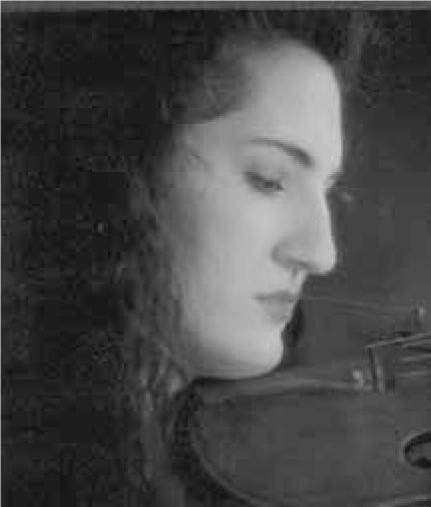
Anne-Marie Brown, violin
Anne-Marie Brown, a member of the Kansas City Symphony since 2001, performs extensively as soloist and chamber musician throughout the Kansas City area. The Kansas City Star has described her performances as displaying "splendid virtuosity, with a rich impressive tone" and KCMetropolis has said her "playing was stellar, with lyricism and technique to spare." The Miami Herald has noted her work's "silky, suave tone and unaffected beauty." In recent seasons, she has been a frequent soloist with the Kansas City Chamber Orchestra, a guest musician with Summerfest, and a member of the newEar Contemporary Chamber Ensemble, recording a work for piano trio on the Navona label in 2012. In addiHon, she serves on the faculty of the Heartland Chamber Music FesHval.
Previously, she was a member of the New World Symphony, where she appeared as both concertmaster and soloist. She holds degrees from Northwestern University and ManhaNan School of Music.
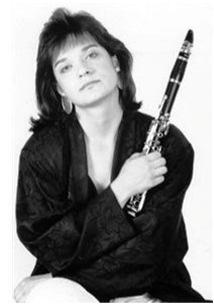
Dr. Jane Carl, clarinet
Jane Carl, Professor of Clarinet at the University of Missouri-Kansas City Conservatory of Music, received her degrees from the University of Michigan. She has been a member of the South Bend Symphony, the Flint Symphony, and the Michigan Opera Theater Orchestra in Detroit, and performed with the Toledo Symphony Orchestra and the St. Paul Chamber Orchestra. She performs regularly with
the St. Louis Symphony Orchestra, as acHng assistant principal clarinet from 1999-2003. She can oRen be heard performing with the Kansas City Chamber Orchestra and the Kansas City Symphony. She was the arHsHc chair of ClarinetFest 2008, the annual conference of the InternaHonal Clarinet AssociaHon, held in Kansas City. Dr. Carl performed at the 2007 China InternaHonal Clarinet and Saxophone FesHval in Beijing, and the 2009 ClarinetFest in Porto Portugal. In the fall of 2009, she became the Chair of UMKC’s Instrumental Studies Division. She has performed with Summerfest for over two decades and is a member of the ArHsHc CommiNee which selects music heard at Summerfest concerts.
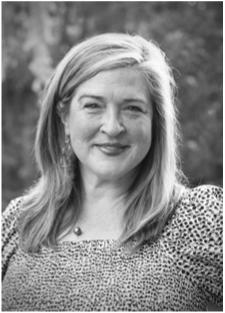
Gwendolyn Coleman has been praised by music criHcs for possessing a voice of “divine beauty” with “sparkling coloratura” and “impressive high-flying top notes” (Opera News). Her solo concert work includes appearances with the San Francisco Opera Orchestra, CincinnaH Symphony Orchestra, Buffalo Philharmonic Orchestra, San Antonio Symphony Orchestra, Louisville Orchestra, Colorado Symphony Orchestra, Columbus Symphony Orchestra, and New York Chamber Orchestra among others. Dr. Coleman made her European debut as the soprano soloist for the Klassiche Musikfest’s performances of Haydn’s Die Jahreszeiten and Beethoven’s Mass in C in Austria. Her opera role repertoire includes Gilda in Rigole8o, Adele in Die Fledermaus, Blonde in Die En9uhrung aus dem Serail, the Governess in Turn of the Screw, Monica in The Medium, and the Htle role in Cendrillon
among others. Dr. Coleman can be heard on the Newport Classic’s CD recording of Moore’s The Ballad of Baby Doe and as the leading soprano, Suleika, on Centaur Record’s world-premier recording of Schubert’s Der Graf von Gleichen. In recital and vocal chamber music, Dr. Coleman’s repertoire includes literature spanning from the Baroque to the 21st Century. This season, she performed in Italy and the United Kingdom as well as here at home. A champion of new music, she has performed the world premiere of Chris na’s World, based upon the Andrew Wyeth painHng of the same name and wriNen for her by Juliana Hall, with the CincinnaH Song IniHaHve. Dr. Coleman received her vocal and opera training at Northwestern University, the University of CincinnaH College-Conservatory of Music and the San Francisco Opera Center Merola Young ArHst Program.
Dr. Coleman is a Professor of Voice and Coordinator for Vocal Chamber Music at the University of CincinnaH College-Conservatory of Music (CCM). She has served as faculty for many fesHvals: Accademia Vocale Lorenzo MalfaW in Lucca, Italy; SongFest in Los Angeles, CA; the Spoleto FesHval in Italy; the Vianden InternaHonal Music FesHval in Luxembourg; and as vocal judge for Classical Singer in Beijing, China.

Maria Crosby, cello
Maria Crosby received her undergraduate degree in cello performance from DePaul University in Chicago where she studied with Stephen Balderston and Tanya Carey. She went on to earn a master's degree from the University of Southern California in Los Angeles, under the tutelage of Peter Stumpf.
Maria joined the Kansas City Symphony in 2012. In addiHon to full-Hme orchestral playing, she is also an acHve chamber musician. She has performed on stages
across the United States, Canada, Germany, France, Lithuania, Armenia, Greece, Russia, Japan, and Brazil, and has parHcipated in a variety of orchestral and chamber music fesHvals, including the Aegean Verdi FesHval, the Schleswig Holstein Musik FesHval, the Pacific Music FesHval, the Banff Chamber Music Residency, the Recontres francoaméricaines de Musique de Chambre and the Pine Mountain Music FesHval. Maria first performed with Summerfest in 2014.

Tony DeMarco, violin Tony DeMarco has been a member of the Kansas City Symphony for 14 seasons. His previous professional experience includes Assistant Concertmaster of both the Virginia and North Carolina Symphonies, subsHtute for the PiNsburgh Symphony, and a member of the PiNsburgh Opera and Ballet Orchestra. He was raised in the South Hills of PiNsburgh then enrolled at Carnegie- Mellon University at age 16, then transferred to Oberlin Conservatory where he earned an arHst’s diploma. Having chosen his career path at age 9, Tony credits the violin, his mother Bonnie, and his teacher Albert Hirtz of the PiNsburgh Symphony for the opportunity to travel to Asia, Europe, and all around the United States, making lasHng friends and playing great music. Best among those friends is his wonderful wife, Jeannine Elashewich. Together with sons Albert and Roman, they now reside in a “LiNle House in Prairie Village.”
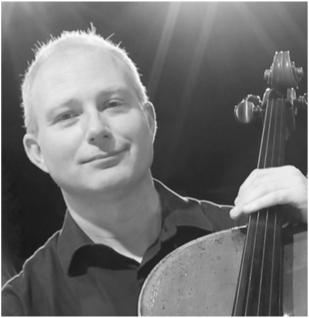
Alexander (Alex) East, cello
Alexander East serves as the Assistant Principal Cello of the Kansas City Symphony. In addiHon to duHes with the Symphony, which oRen include leading the secHon as principal for opera, ballet and chamber orchestra performances, East is also heard frequently in recitals and chamber music concerts throughout the Kansas City region and beyond. He has also performed with the Sun Valley (Idaho) Summer Symphony every summer since 1992.
In the Kansas City area, he has performed regularly in groups including Summerfest Chamber Music Concerts (also serving as an ArHsHc Advisor), the Boulevard String Quartet and newEar Contemporary Chamber Ensemble. Before seNling in Kansas City, East spent two seasons as a member of the New World Symphony under the direcHon of conductor Michael Tilson Thomas, and he was also re-invited to coach the NWS cello secHon as a guest alumnus. East has been featured as soloist with the Kansas City Symphony, the Kansas City Chamber Orchestra, the Sedalia Symphony, the Erie (PA) Chamber Orchestra and the Fredonia Chamber Players.
East received his training at Indiana University where he received a bachelor’s degree and performer diploma, and he earned his master’s degree at the New England Conservatory of Music. His teachers have included Tsuyushi Tsutsumi, Janos Starker, Laurence Lesser and Colin Carr. He performs on either an English cello made in London ca. 1800-10 by John BeNs or a contemporary cello made in 2016 by Kenneth Beckmann.
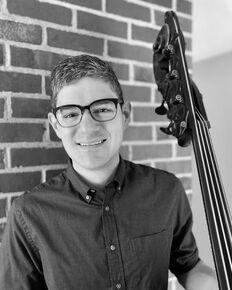
Evan Halloin, bass
Evan Halloin is thrilled to be joining Summerfest as an arHsHc advisor in 2023. He was appointed associate principal bass of the Kansas City Symphony in 2016 aRer having served as a member of the bass secHon since 2012. Prior to coming to Kansas City he was a member of the New World Symphony. He earned a master’s degree from Rice University and a bachelor’s degree from the New England Conservatory. His primary teachers include Timothy PiNs and Donald Palma. Halloin has performed as a subsHtute musician with the Chicago, Milwaukee, and Houston Symphony Orchestras, and the Saint Paul Chamber Orchestra. Originally from De Pere, Wisconsin, Halloin currently resides in Prairie Village, Kansas, where he loves to let his dog Penny take him, his wife Margaret, and twoyear-old son Graham for walks around the neighborhood.
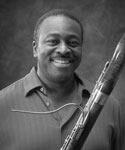
Joshua (Josh) Hood, bassoon
Joshua Hood, bassoonist, received his bachelor of music degree from the University of Michigan, where he studied with Lewis Hugh Cooper. He completed his master's degree at the Shepherd School of Music at Rice University with Benjamin Kamins, former Principal Bassoonist of the Houston Symphony. Hood has performed with a number of orchestras including the Kansas City Symphony, Houston Symphony, and the North Carolina Symphony. He joined the CharloNe Repertory Symphony to outstanding reviews. He has also performed with several fesHvals including the Pacific Music FesHval in Japan, May Music FesHval in CharloNe, NC, Gateways Music FesHval in Rochester, NY, the Music Academy of the West in Santa Barbara, CA, and with the Ritz Chamber Players on the Amelia Island Music FesHval in
Florida. He has performed with Summerfest since 1998.
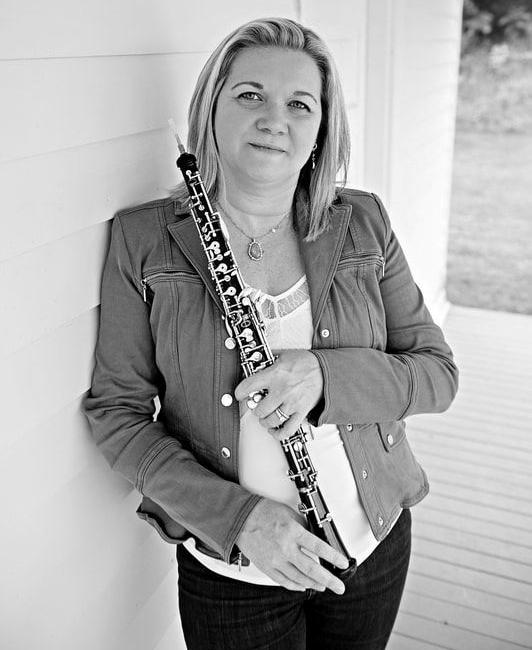
Celeste Johnson Frehner, oboe
Celeste Johnson is currently Associate Professor of Oboe at the University of MissouriKansas City Conservatory and remains acHve as a performer, pedagogue, clinician and presenter. She performs as a subsHtute with the Kansas City Symphony and has also performed as a featured soloist with the Tulsa Symphony Orchestra, of which she was a member for eleven seasons. As a performer, Celeste has presented concerts in Japan, Colombia, Switzerland, the Isle of Man (BriHsh Isles), Canada and across the United States.
Her first recording, KaleidosCoping, features 21st century composiHons for flute, oboe and piano and was released in 2019 on the Equilibrium label. Her second album, Wider Than the Sky, features composiHons by women composers and was released on the same label in 2023. Celeste maintains acHve memberships in professional organizaHons, and as such has presented at the InternaHonal Double Reed Society, Midwest Double Reed Society as well as the Texas, Missouri and Oklahoma Music Educators AssociaHon conferences. She has recently been named chair of the Norma Hooks Young ArHst CompeHHon for oboe, hosted by the InternaHonal Double Reed Society biannually.
Ms. Johnson holds degrees from the Eastman School of Music and the University of Illinois at UrbanaChampaign.
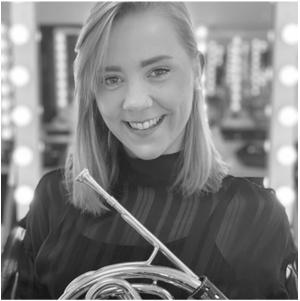
Victoria Knudtson, horn Minnesota-born horn player Victoria Knudtson joined the St. Louis Symphony Orchestra as Assistant/UHlity Horn during the 2019-2020 season. Born to a pianist mother and singer father, Knudtson found her arHsHc voice on the horn when she was 16 years old aRer a coincidental meeHng with her first teacher, Wayne Lu.
Knudtson received her Bachelor's degree from Indiana University in 2017 and her ArHst Diploma from the CurHs InsHtute of Music in 2020 under the tutelage of Jennifer Montone and Jeffery Lang of the Philadelphia Orchestra.
During her studies at IU with Canadian Brass horn player Jeffery Nelsen, she also benefited from the orchestral pedagogy of Dale Clevenger, former principal horn of the Chicago Symphony, and studied early music performance on the natural horn with Richard Seraphinoff. She spent the Fall 2016 semester in Vienna, Austria, studying with members of the Vienna Philharmonic. She served as principal horn of the Columbus Indiana Philharmonic from 2016-2018, and held a core horn posiHon with the ensemble Symphony in C from 2018-2019. Knudtson has performed as a soloist with the Indiana University Symphony Orchestra and the Yale New Music Ensemble and frequently performs chamber music in various ciHes. She ardently enjoys collaboraHng with composers and performing new music. Knudtson was a horn fellow of the Boston Symphony's Tanglewood Music Center in 2019, and at the Pacific Music FesHval in Sapporo, Japan with music director Valery Gergiev in 2018. Knudtson played a leader/ teacher role as a staff member at Kendall BeNs Horn Camp for several years, and will be teaching at Heartland Horncamp in the summer of 2022 for its inaugural event. When not on stage or in the pracHce room, Knudtson enjoys spending Hme outside, gardening, painHng, and laHn dancing.
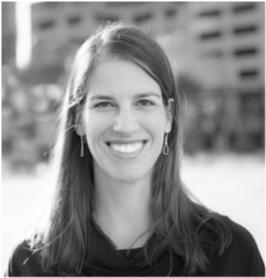
Jessica Nance, viola
Jessica Nance has been a member of the Kansas City Symphony since 1995 and Assistant Principal Viola since 1997. She has performed locally with the Boulevard String Quartet, newEar, the Kansas City Chamber Orchestra, and on a variety of chamber music, solo, and educaHonal projects. Before moving to Kansas City, Jessica was Principal Viola in the Michigan Opera Theater and with the PiNsburgh Symphony Orchestra. She aNended the University of Michigan where she studied with Yizhak SchoNen. Jessica is married to trumpeter Brian Rood and together they have two children. When not playing the viola, she enjoys running and triathlon training. Jessica has performed with Summerfest since 2000.
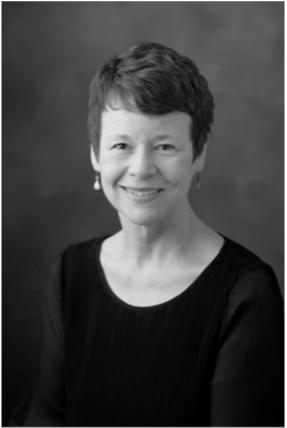
Melissa Rose, piano Melissa has enjoyed performing with Summerfest since 1994.
Currently she lives in Nashville, TN, and is Professor of Piano and newly appointed Dean of the Vanderbilt University Blair School of Music. As a collaboraHve pianist, Melissa has partnered with instrumentalists and singers in concerts throughout the United States and at venues in ArgenHna, Malta, Santorini, and Russia. She has recorded and edited arrangements for viola/piano of the Tonadillas by Granados (ViolaSound), one of which was included in the Grammy-nominated music film, The Music of Strangers. In addiHon to chamber music recordings on the Naxos, Centaur, Blue Griffin, Delos, Good Child Music, and Navona Records labels, Melissa has parHcipated in numerous premieres and residencies with leading American composers. She received the M.M. in piano performance from the Yale School of Music and the D.M.A. in collaboraHve piano from the University of Michigan.

Richard Ryan, bass
Richard Ryan, an Arizona naHve, has been a Kansas City Symphony member for four seasons. Before his tenure in Kansas City, he was Assistant Principal bass of the Louisville Orchestra. A graduate of Indiana University Jacobs School of Music, Richard has parHcipated in music fesHvals such as Aspen and Artosphere, and has conducted the Louisville Youth Orchestra and Kling Chamber Orchestra.

Karen Savage, piano Praised as a "tour de force" (Santa Barbara News-Press), for "breathtaking beauty and pure lyricism" (Le Soleil, Vancouver), and for “fearless performance” (The Straits Times, Singapore), Karen Hsiao Savage is Professor of CollaboraHve Piano and Coordinator of Chamber Music at UMKC Conservatory, where she created the new master’s degree in CollaboraHve Piano. Karen received a doctoral and two master’s degrees (in solo and collaboraHve piano) from Juilliard, and a BMus from University of Victoria. She has performed internaHonally in such venues as Carnegie Hall’s Weill Hall, Merkin Hall, Alice Tully Hall, Shanghai Grand Theatre, and Perlman Music Program, with broadcasts on internaHonally syndicated NPR programs and on Vietnamese and Chinese naHonal television. Recent performances include those with members of the Kansas City Symphony, New York Philharmonic, LA Philharmonic, Chiara quartet, and a recording of works by women composers with oboist Celeste Johnson.
Karen’s piano duo 88SQUARED with husband Jeff Savage has received criHcal praise for internaHonal performances and recording premieres of two-piano works by Lowell
Liebermann (Albany Records) and by Daniel ON (Navonna/PARMA Records), at the invitaHon of the composers who served as the albums’ producers. They won the Ellis Duo Piano CompeHHon, the Abild Prize in American Music, and second prize and special menHon at Concours Grieg InternaHonal CompeHHon (Norway). They frequently premiere new two-piano works; upcoming projects include a staged version of Rome Prize winner Paul Rudy’s A Time of Ma’at for two pianos with choreography by Guggenheim Fellow Gary AbboN, highlighHng the experience of mass incarceraHon.
Karen’s teachers include Jonathan Feldman, Margo GarreN, Sam Sanders, Veda Kaplinsky, and Robin Wood; addiHonal coachings were with Anne Epperson and Robert McDonald. A devoted teacher, Karen recently received the UMKC Friends of the Conservatory Faculty Excellence Award and the Provost’s Award for Excellence in Mentoring.

Daniel (Dan) Velicer, piano
An acHve performer and teacher, Dan Velicer appears regularly with the Kansas City Symphony, Trio Fedele, and the Lyric Arts Trio. He is a frequent collaborator with members of the Kansas City Symphony and the UMKC Conservatory faculty. Velicer also helps university and high school students prepare for recitals and compeHHons. Prior to arriving in Kansas City, he was an Opera Coach Fellow at the Aspen Music FesHval and the head staff pianist at the University of the Pacific Conservatory of Music. Along with his wife, KrisH, Velicer was on the faculty of the Rocky Mountain Summer Conservatory where he coached chamber music, led master classes, and performed with faculty. He received his bachelor of arts degree from Cornell University, majoring in both
anthropology and music. He received his master of music degree from Rice University.
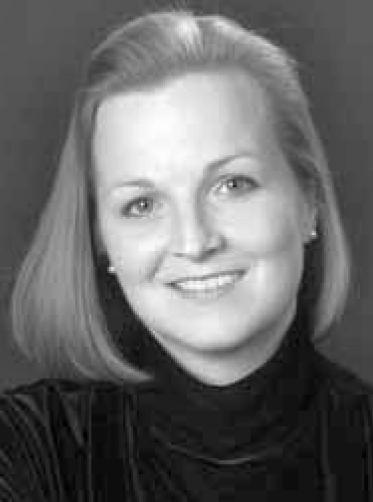
KrisDn (KrisD) Velicer, violin
KrisHn Velicer is the Assistant Principal Second Violinist with the Kansas City Symphony. Velicer has performed and toured internaHonally with numerous major orchestras including the Houston Symphony, the Grant Park Symphony Orchestra, and the Minnesota Orchestra. She has appeared on NaHonal Public Radio as a featured soloist and chamber musician on Performance Today and Houston in Concerts. Velicer was an invited performer in the Carnegie Hall tribute to Alexander Schneider, founder of the New York String Orchestra Seminar. Velicer holds a bachelor's degree in violin performance at Overlin College Conservatory of Music where she studied with Kathleen Winkler. While at Overlin, she received the presHgious Conservatory Dean’s Talent Award. Velicer later received a master’s degree from Rice University-Shepherd School of Music studying with Raphael Fliegel and Kathleen Winkler. Velicer served, along with her husband Dan, on the faculty of the Rocky Mountain Summer Conservatory in Steamboat Springs, CO.
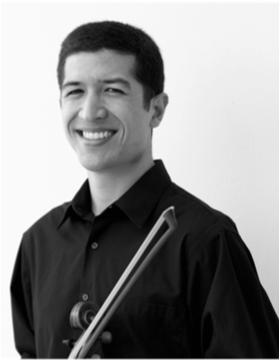
Jesse Yukimura, viola Violist Jesse Keone
Yukimura, from Washington State, discovered at an early age the joys of ensemble music, from chamber music to orchestra. Jesse received a Bachelor of Music degree in Viola Performance from the Oberlin Conservatory of Music, where he studied with Peter Slowik, as well as a Bachelor of Arts in Chemistry from Oberlin College. He then studied with Ralph Fielding at the Lynn Conservatory of Music, where he earned a Master of Music degree and a Professional Performance CerHficate. Before moving to Kansas City, Jesse was a viola fellow at the New World Symphony in Miami Beach, an orchestral academy founded by arHsHc director Michael Tilson Thomas. Jesse joined the Kansas City Symphony in 2018, previously joined KC Summerfest in 2019, and is excited to play again this summer. Outside of music, Jesse maintains a variety of interests, from birdwatching to boardgames.
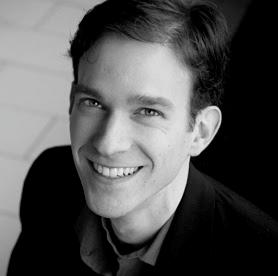
Dr. Andrew Granade: Dr. Andrew Granade is an Assistant Professor and Area Coordinator for Musicology at the UMKC Conservatory of Music and Dance. His research and teaching focus on the recepHon and percepHon of modern music in a variety of forms and genres. He is compleHng a book exploring the impact of the hobo persona on Harry Partch’s life, work, and recepHon, as well as the issues of exoHcism that arise from it. The interest in exoHcism carries over into his other areas of interest, especially the shape-note singing tradiHon of the rural American South and the interplay between Chinese and American music in the 20th century.
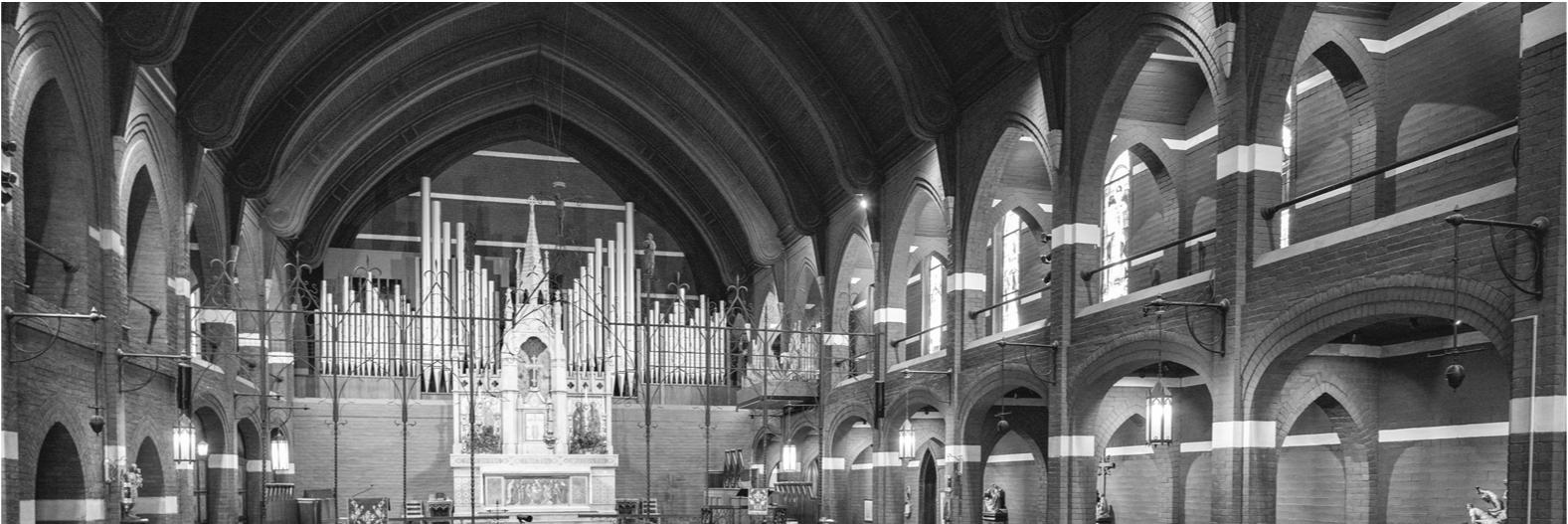
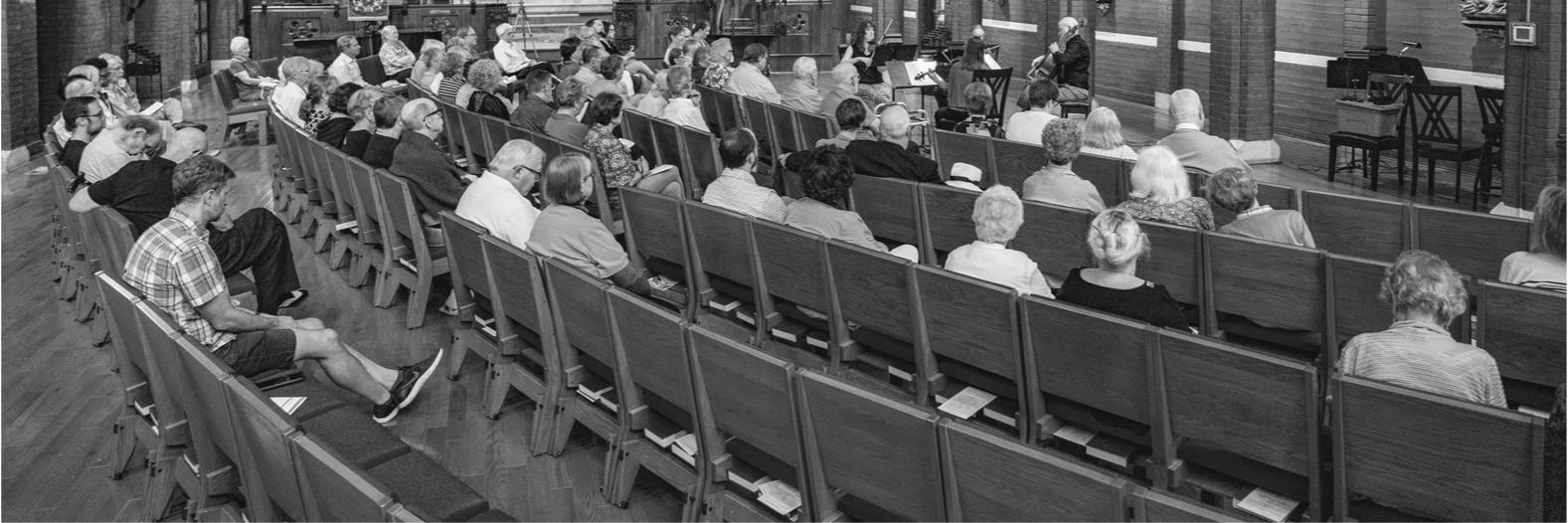
Summerfest’s 32nd season was made possible with generous support from the following:
Founda on Support:
$5,000-9,999
Missouri Arts Council
Muriel McBrien Kauffman Founda on Neighborhood Tourist Development Fund
Richard J. Stern Founda on for the Arts
William T. Kemper Founda on
$1,000 –4,999
Louise and Frances Swinken
Suppor ng Founda on of the Jewish Community Founda on of Greater Kansas City
Martha Lee Cain Tranby Music Enrichment Fund
Individual Contributors:
Benefactors ($2,500+)
Charles and Virginia Clark Fund
The Stephen and Karen Clegg Fund
Patrons ($1,000-2,499)
Carolyn Brewer
Lisa Browar
Una Creditor
Miller-Mellor Associa on Dr. Mary Redmon
Don Shanks
Barbara and Burt Smoliar
Brogan and Lara Sullivan
Sponsors ($500-999)
Joe Archias
Dr. Robert and Sandra Coleman
Sara Engber
Noble Freeman K&L Gates LLP
Jonathan Kemper
John Kinsey and Mar Moore
Jon Kowing
Robin Onikul
Mareta Smith
Donors ($250-499)
Don Dagenais
John Schaefer
Julia Tro8er
Board of Directors
Brogan Sullivan, President
Lisa Browar, Vice President
Stephanie Miller, Treasurer
Mary Redmon, Secretary
Carolyn Brewer
Sara Engber
Noble Freeman
Robin Onikul
John Schaefer
Don Shanks
Mareta Smith
ArDsDc Advisors
Jane Carl
Alexander East
Evan Halloin
Celeste Johnson-Frehner
Ex-Officio
Cory Unrein, AdministraHve Coordinator
A Sincere Thank You
The Summerfest board and staff would like to recognize the following for their generous and invaluable contribu ons:
St. Mary’s Episcopal Church
Raja Reed, Parish Administrator
Program Notes
Dr. Andrew Granade
Friends ($25-249)
Bruce Bradley
Jane Carl
Kathleen Cita
Daniel Co8on
James East
Julie Elfving
Carol Fields
Susanne Gladney
Evan Halloin
Susan Hawk
Yvonne Jameson
Mary Kowalski
Mark Long
Stephanie Miller
Kathryn Pruessner Peters
Chad and Kris n Reickard, in memory of Terry Pritche8
Melissa Rose
Willis Theis
Cory Unrein
Ronda Warren
Dan and Barbara Weary Fund
Debbie Williamson
Catherine Wilson


Photography
Andrew Schwartz
Piano Tuning—St. Mary’s
John Yerardi
Social Media Assistance
Dani Hoisington
Stage Manager
Adam Stallings
Housing
Jane Carl and Jan Gippo
Dr. Robert and Sandra Coleman
Alex East and Jon Kowing
Summerfest, a professional chamber music ensemble, enriches the cultural life of Kansas City through the performance of a variety of music in a seWng that fosters interacHon between musicians and audience members.
In 1990, contemplaHng the year ahead, Lamar Hunt Jr. noHced that art enthusiasts and musicians had limited or no opHons for live classical music during the summer. The following year, aRer much planning and preparaHon, Lamar and four of his colleagues set forth the tradiHon of the Summerfest concert series. Equipped with their superior talent, excitement for chamber music, and energy to create, this group did a casual series of concerts in suburban Kansas City area churches. And the rest, as they say, is history. Over the last 32 years, though leadership and personnel have changed, Summerfest has never lost sight of its original intenHons; providing a rare and unique opportunity for high quality, fine arts experiences in Kansas City during July. We conHnue to program innovaHve and unique concerts in which our patrons can be both challenged and entertained. We remain focused on making music accessible to all through our outreach efforts with youth and seniors. And we remain commiNed to enriching this great Kansas City arts community.
To our loyal patrons, thank you for your conHnued support and enthusiasm for what we do. To those of you new to our concerts, we welcome you enthusiasHcally and look forward to sharing our classical chamber music experience with you.

